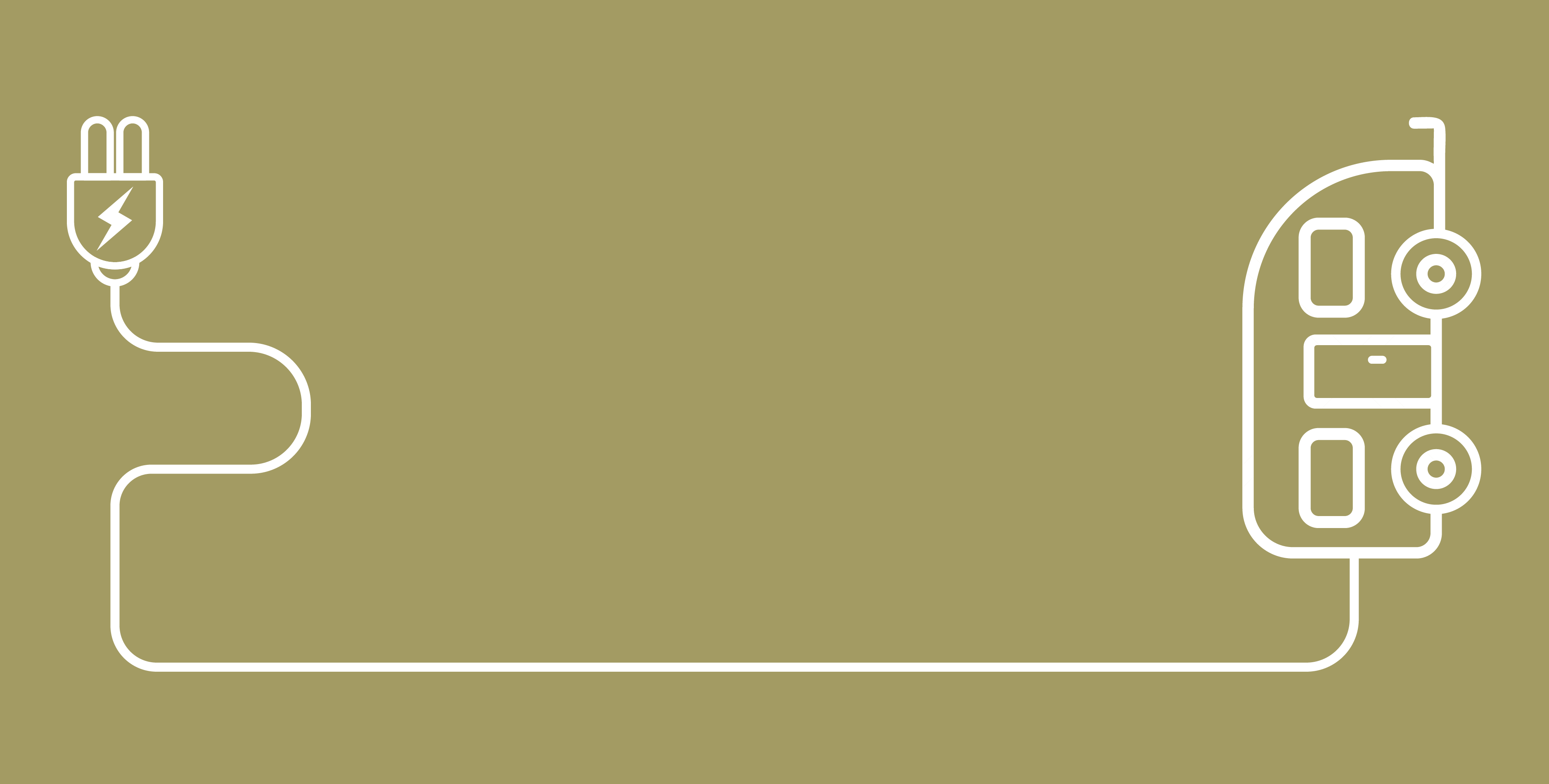
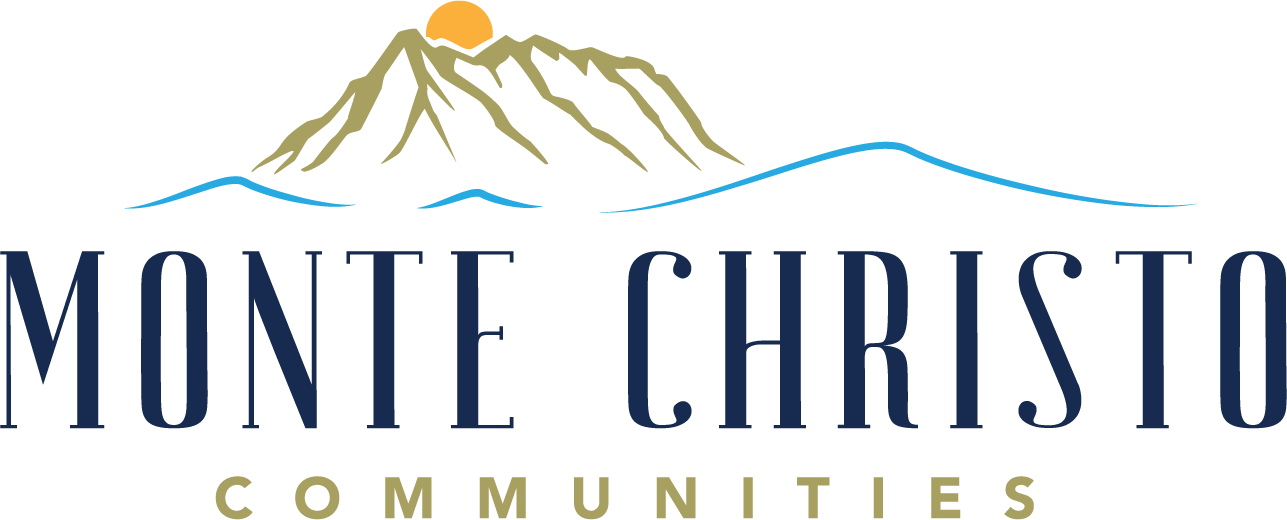
Featured Homes


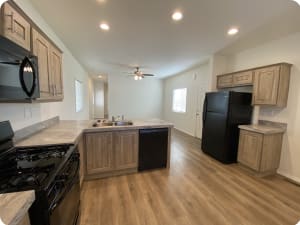
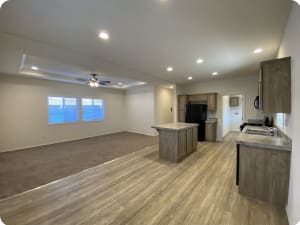


As low as 3.9%! Call us for more information: (916) 461-8004
As low as 3.9%! Call: (916) 461-8004
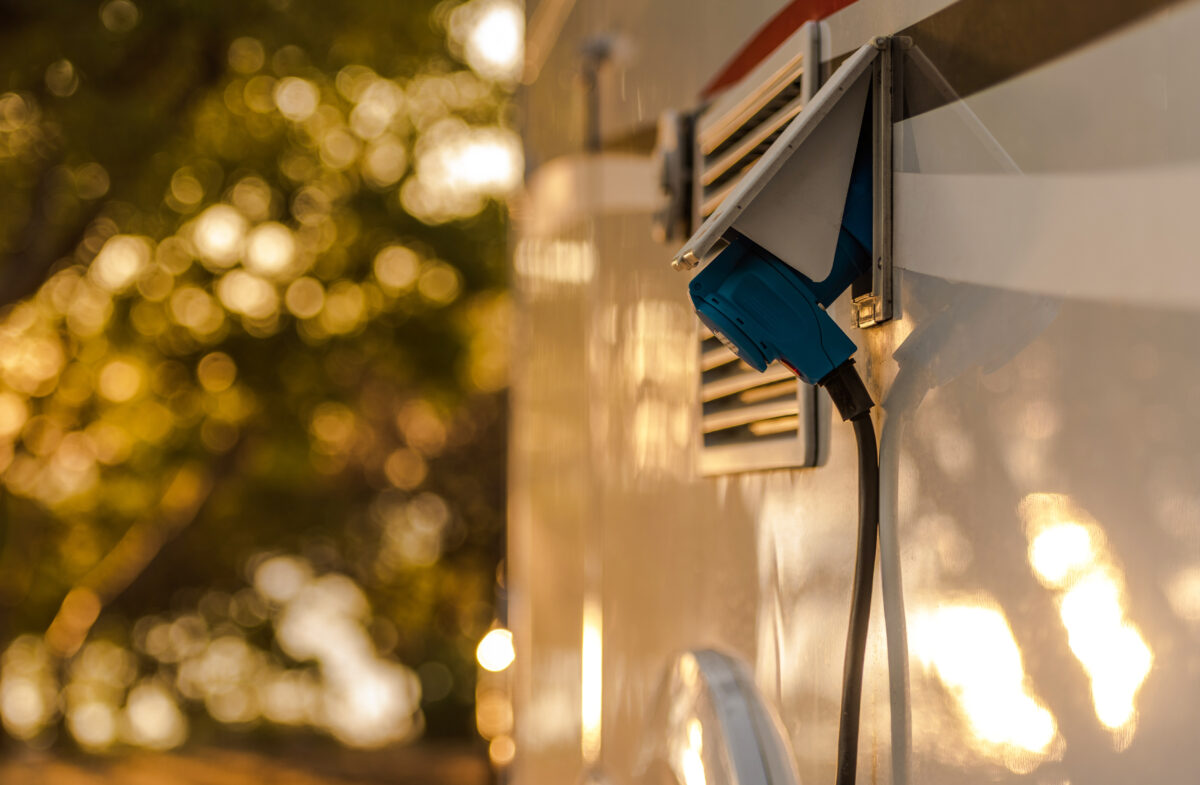

When you arrive at an RV site within an RV park, you’ll likely want to connect your RV to power first thing – after parking, leveling, and stabilizing, of course. This will allow your appliances like your refrigerator and air conditioner to cool while you get the rest of your RV site set up.
First, you’ll need to know a bit about your RV’s electrical system. The electrical hookup for your RV is referred to as shore power, which is any power source provided by the RV park or campground. Read this article on AC vs DC Power Supply and Your RV’s Electrical System written by an RV expert at Camping World for a deeper understanding of how your trailer or RV electrical system works.
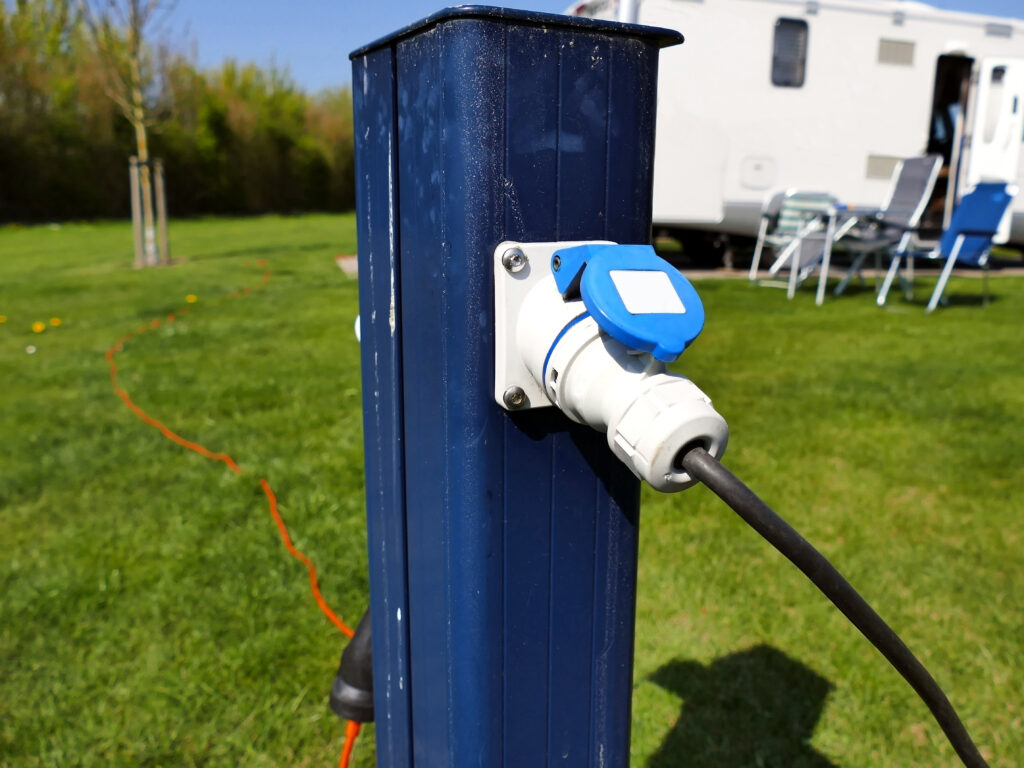
30-Amp vs. 50-Amp Shore Power Connection
Next, determine whether you have a 30-amp or 50-amp shore power connection. The majority of RVs require a 30-amp or 50-amp connection. To determine which electrical service your RV needs, look on the shore power cord at the number of prongs; 30-amp plugs have three prongs, and 50-amp plugs have four prongs.
It is possible to connect a 50-amp RV into a 30-amp plug or a 30-amp RV into a 110 VAC outlet, but you’ll need to be strategic and limit your power usage to ensure you don’t trip a breaker or an outlet, or, at worst, damage the electrical system in your RV.
RV adapters are available, but you won’t get the full amperage your RV is intended to run on if you connect to a lower-rated power source. Check with the RV park or trailer park first to determine what type of shore power connection they offer.
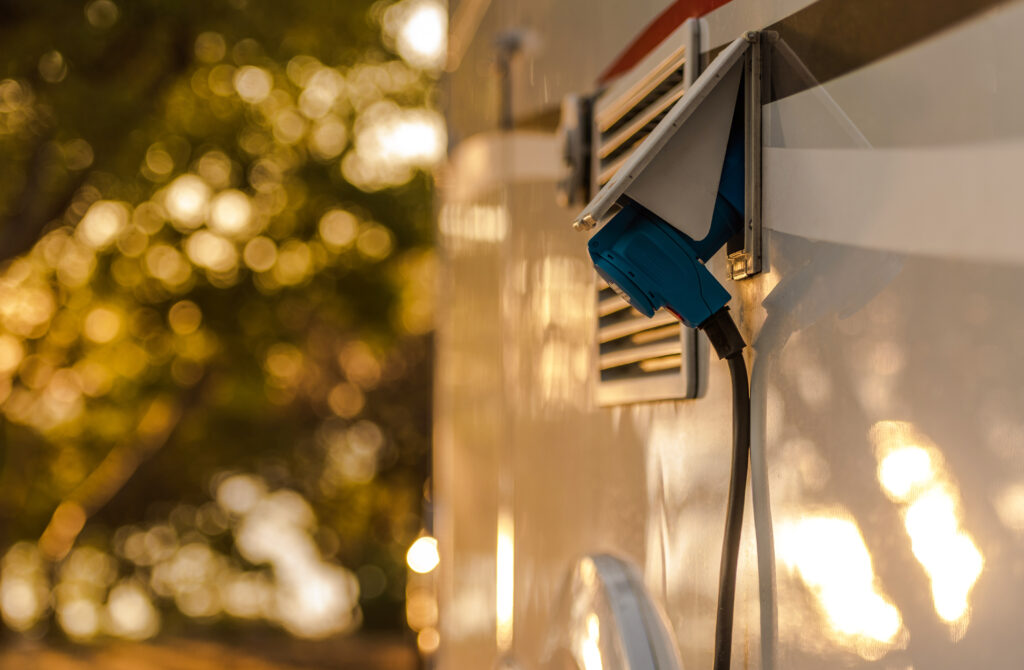
How to Hook Up Your RV to Electricity at an RV Site
Now comes the fun part: connecting your RV to the power source at your site. There are a few steps we mentioned earlier you’ll want to tick off your checklist prior to connecting your RV to electricity (steps 1-3):
For more tips on connecting your RV to electrical service and for steps on how to disconnect electricity from your RV, read this article by RVShare.
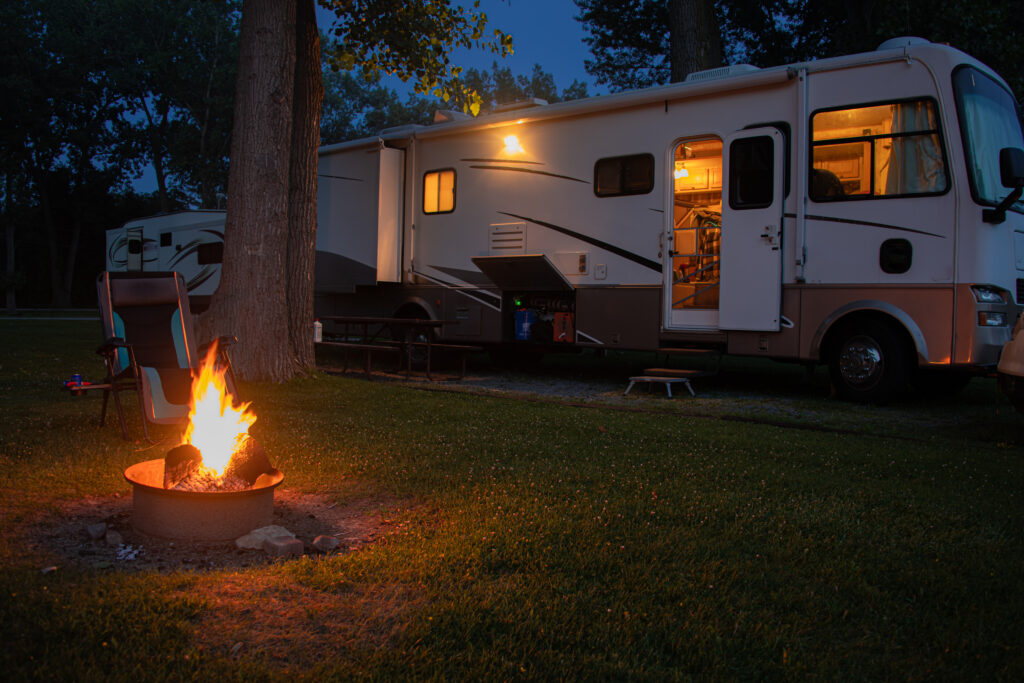
RV Sites for Rent With 30-Amp and 50-Amp Services
If you are looking for your next RV site – whether you’ll be calling it home for the long haul, using it as a launch pad for adventure, or posting up in a location close to new work – check out our available RV sites for rent here. Our RV Parks offer long-term stays and some also offer short-term stays. Monte Christo Communities operates RV parks on the West Coast of the U.S.
Notable RV Parks in the West with Available RV Sites for Rent*
Pepper Ridge RV Park in Reno, NV
Driftwood RV Park in Brookings, OR
Parkway Lakes RV Park in Morgan Hill, CA
Vallejo MHC and RV Park in Vallejo, CA
Pleasant Valley MHC and RV Park in Oroville, CA
*At the time of publishing this article, the RV parks listed had RV spaces available for rent. RV site availability is subject to change.







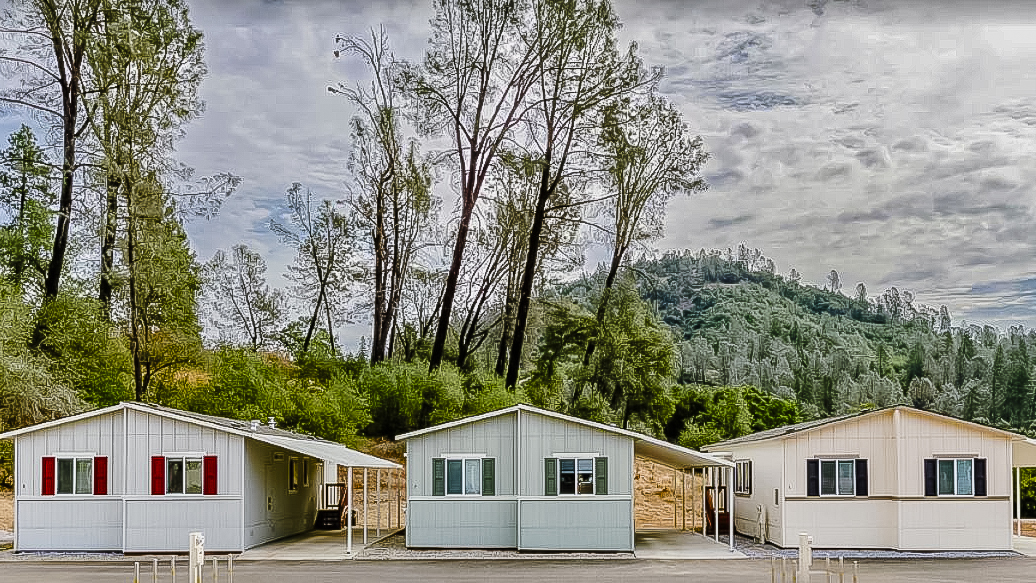

When it comes to purchasing a home, prospective buyers often weigh the pros and cons of various types of housing. Manufactured homes, sometimes known as mobile homes, present a distinct set of advantages compared to traditional stick-built homes. While each option has its unique benefits, here are three key advantages of opting for a manufactured home.
1. COST EFFECTIVENESS
One of the most compelling reasons to consider a manufactured home is its cost-effectiveness. Manufactured homes typically come with a lower price tag compared to traditional stick-built homes. This affordability is largely due to the efficient construction process, which takes place in a factory setting. Because manufactured homes are built on assembly lines, with streamlined production techniques and bulk purchasing of materials, the overall cost is significantly reduced.
For many buyers, especially first-time homeowners or those looking to downsize, the lower price point of manufactured homes makes homeownership more accessible. Reduced costs don’t only apply to the purchase price; many manufactured homes are designed to be energy-efficient, potentially leading to lower utility bills in the long run.
If the manufactured home is already built by a company like Casa Park Homes and within a community like one of Monte Christo’s on the west coast, you may have built-in financing options through partner companies they work with, making the buying process a bit simpler. Additionally, these management companies often run special offers, like Monte Christo’s $5,000 buyer rebate on new manufactured homes.
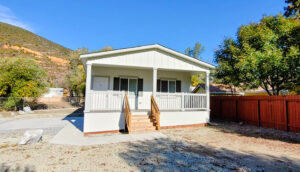
2. ENERGY EFFICIENCY AND MODERN FEATURES
Many modern manufactured homes are designed with energy efficiency in mind, featuring high-quality insulation, energy-efficient windows, and advanced HVAC systems. Additionally, they often include contemporary design elements and upgrades that might be more expensive or less commonly found in older stick-built homes.
Additionally, manufactured homes are built in a controlled factory environment (like Clayton Homes’ and Champion Homes’), so the construction process is less susceptible to weather delays and other external factors that can slow down the building of traditional stick-built homes. As a result, manufactured homes can often be completed in a fraction of the time it takes to build a conventional home.
If you are looking to move into a brand new home quickly, this expedited construction timeline translates into a quicker move-in date. For buyers eager to settle into their new home or those facing time constraints, the ability to move into a new manufactured home sooner can be a significant advantage. The efficiency of the factory assembly line and pre-built components mean that what would take months to achieve with traditional construction can be accomplished in a matter of weeks. There are also many already-built manufactured homes that are embedded in communities, which brings us to our next point.
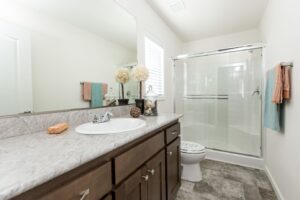
3. EMBEDDED IN COMMUNITY
If you are looking for a quick close on a home or prefer to skip the construction process altogether, opt for a manufactured home in an established private community. Typically, a manufactured home is built within or moved to an established neighborhood of fellow MH dwellers. Well-maintained manufactured home communities can foster a sense of pride in ownership among the residents, making them a pleasant place to live for all. There are anywhere between 35,000–40,000 of these communities across the US both in rural and metropolitan areas.
Plus, many private manufactured home communities feature amenities such as pools, laundry rooms, tennis courts, community rooms, playgrounds and more. These amenities are typically provided and maintained by a management company who keep up the landscaping and maintenance of the community and can look after your home if you’re away. As a community member, you’ll likely pay a monthly space rent (much like an HOA) to support the maintenance and amenities of the community.
Ultimately, It’s a No-Brainer
Choosing between a manufactured home and a traditional stick-built home involves considering various factors, but the advantages of manufactured homes—cost-effectiveness, faster construction, and the support of an established community—make them an appealing option for many buyers. By offering significant savings, quicker move-in times, and a range of customization options, manufactured homes provide a practical alternative that can meet the diverse needs of today’s homebuyers.
Recommended Manufactured Home Communities on the West Coast
Paradise Estates in Paradise, CA
Oak Grove Manufactured Home Community in Redding, CA
Bear Creek Estates in Medford, OR
Heavenly Valley Estates in South Lake Tahoe, CA
Redding HIlltop Estates in Redding, CA
Pleasant Valley in Oroville, CA
Casa Estates Arvin in Arvin, CA

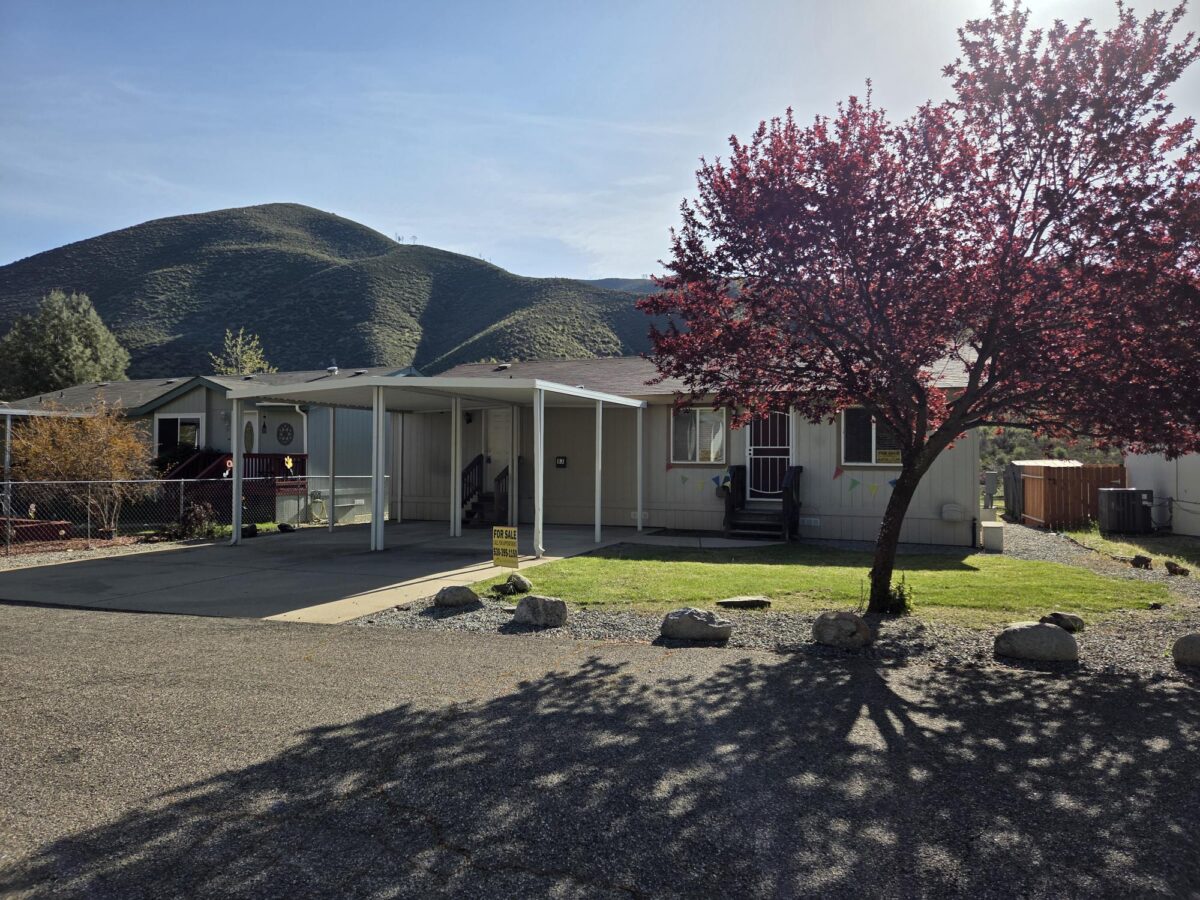
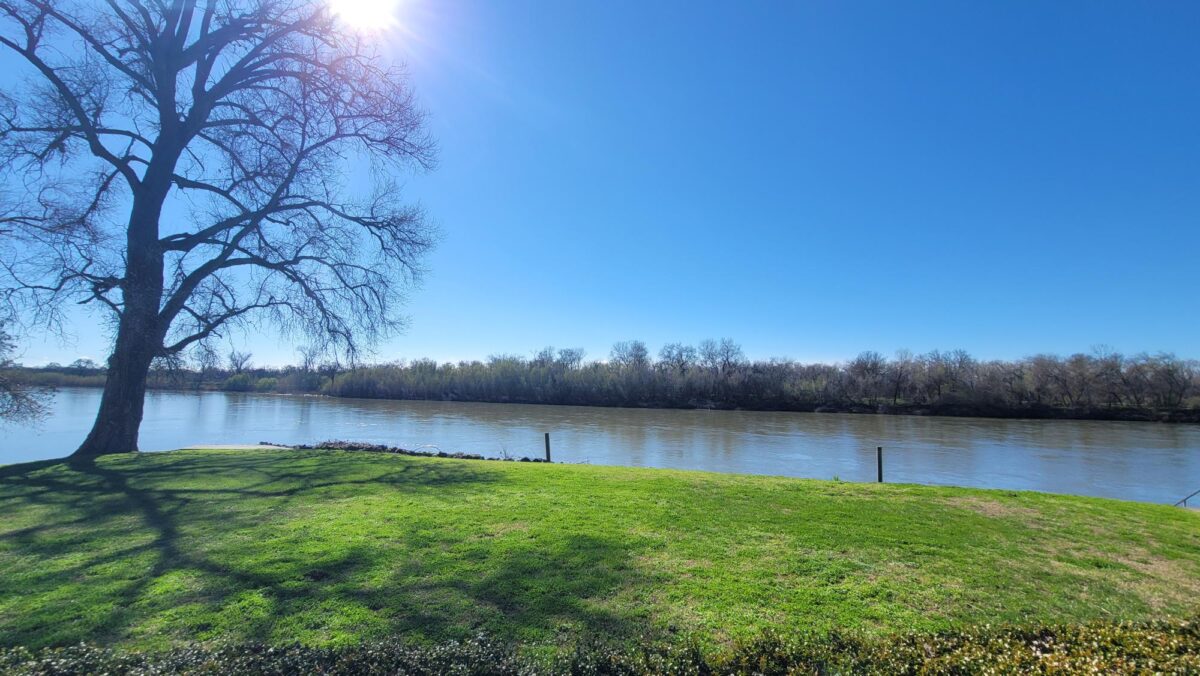
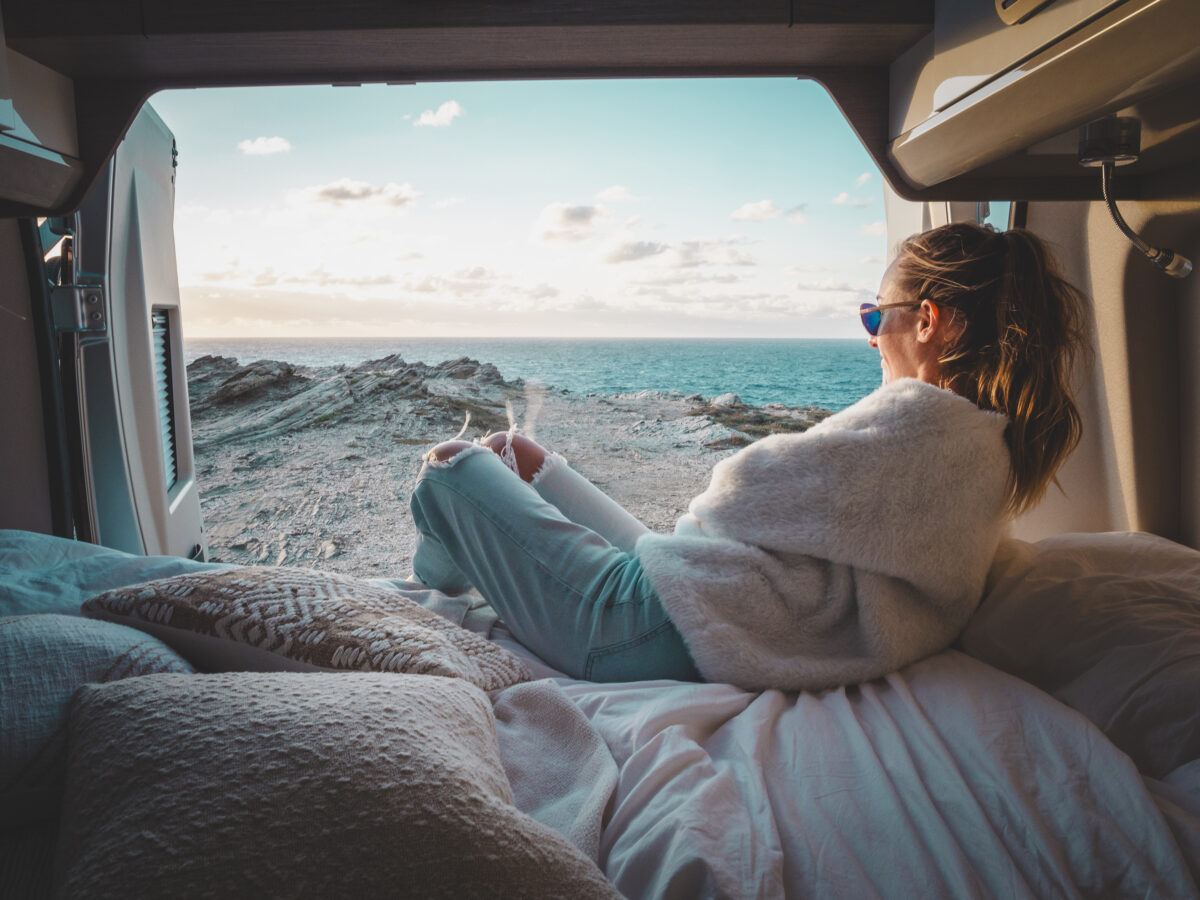
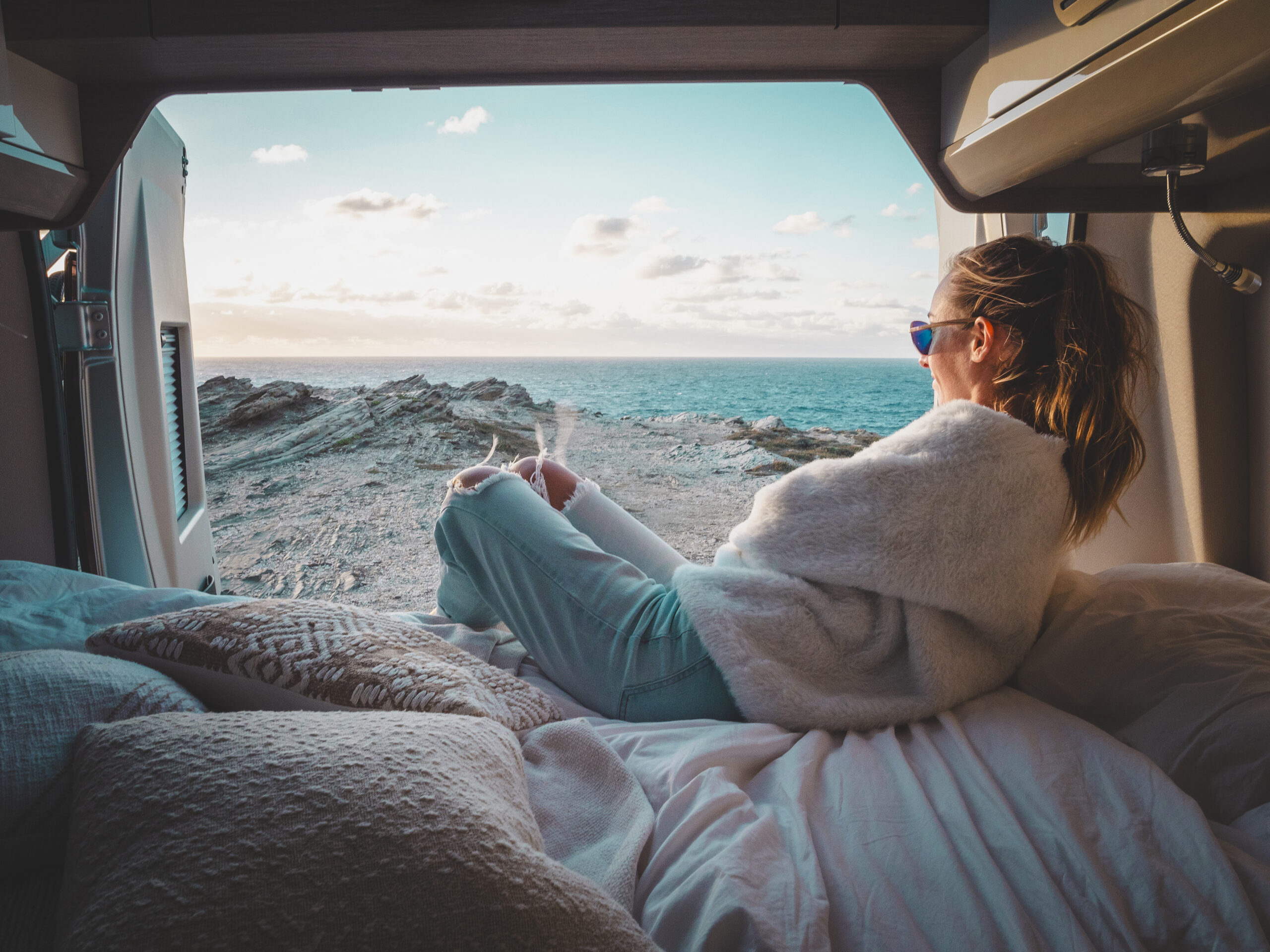
We think the best RV road trips are ones that you can take at a leisurely pace. And by leisurely, we mean long-term RV reservations – 1 month to several months – at scenic RV parks you can use as a jumping off point for further adventure, relaxation, and exploration. One of the top west coast RV road trips we recommend is the Pacific Coast Scenic Byway.
The Pacific Coast Scenic Byway stretches border to border along Oregon’s breathtaking coast.
This stretch of highway in Oregon is open to the public, giving it the nickname “The People’s Coast.” This is a popular road trip route for ample reasons, especially if you take it at a laid-back pace in your RV. RVs afford you the ability to stay in short-term and long-term RV parks along the coast with no pressure on your itinerary, or, should we say, “What itinerary?”
Scenic Overlooks, Rocky Tide Pools, Sandy Beaches, Coastal Communities and More
From Astoria to Newport to Coos Bay to Brookings, you’ll discover a bounty of natural wonders and coastal communities brimming with character. Starting in Astoria in northern Oregon will ensure you and your RV are cruising on the coast-side of the road, affording you prime views.
Oregon’s Pacific coastline stretches for 363 miles, which makes drive time about 10-12 hours for the full route. But of course, we hope you’ll make many stops and stays along the way to fully immerse your senses in all the Pacific Coast has to offer. Who knows, maybe you’ll want to stay for the long haul?
Recommended RV Road Trip Itinerary for the Pacific Coast Scenic Byway
Days 1-2: Astoria to Garibaldi (55.5 mi)
Kick off your RV road trip in Astoria where the mighty Columbia River meets the Pacific.
Where to stay: Nehalem Bay State Park
Sites and Stops Along the Way:
Columbia River Maritime Museum – Astoria’s intertwined heritage with the sea
Fort Stevens State Park – Where the Columbia River meets the Pacific
Seaside, OR – 1920s-era promenade and boardwalk games
Cannon Beach – Galleries, boutiques and views of 235-foot Haystack Rock offshore
Ecola State Park – Sandy coves, forested trails and the cape of Tillamook Head
Nehalem Bay – Forested bike path with views of the bay
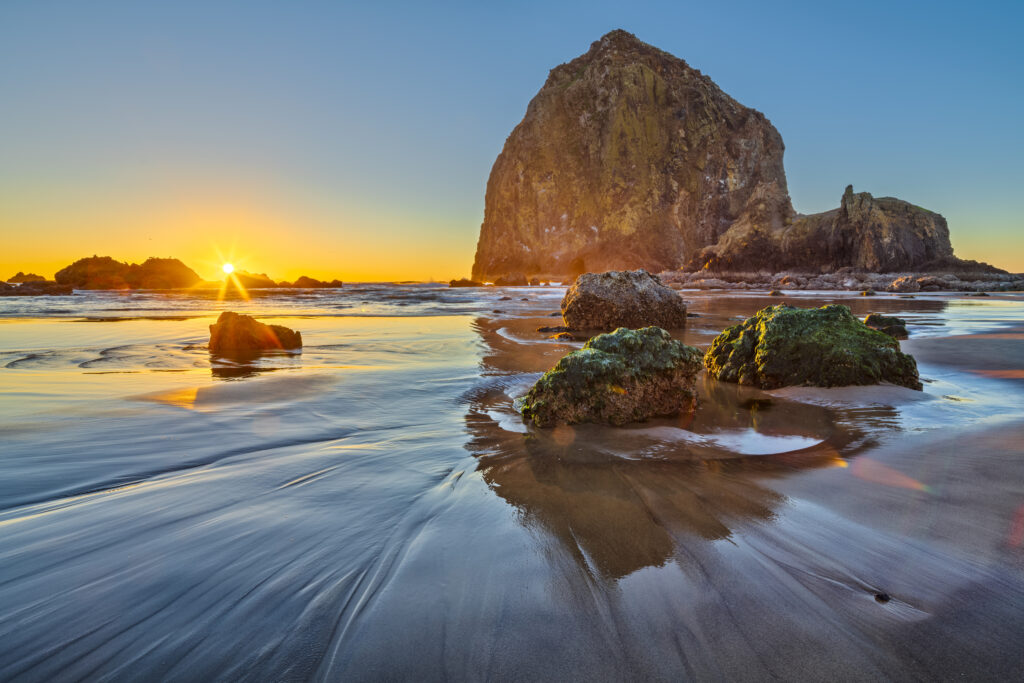
Days 2-3: Garibaldi to Newport (78.3 mi)
With this stretch of the road trip, take some extra time to detour inland along the Trees to Sea Scenic Byway to the Cape Meares Lighthouse.
Where to stay:
Pacific Shores Motorcoach Resort in Newport, OR
Port of Newport RV Park and Marina in Newport, OR
Sites and Stops Along the Way:
Garibaldi – A hub for fishing and kayaking
Tillamook – Sample cheeses at the Tillamook Creamery
Trees to Sea Scenic Byway to the Cape Meares Lighthouse
Three Capes Scenic Loop to Cape Lookout State Park
Pacific City – Little beach town touting the massive sand dune of Cape Kiwanda
Cascade Head Preserve – Trails through old-growth forests
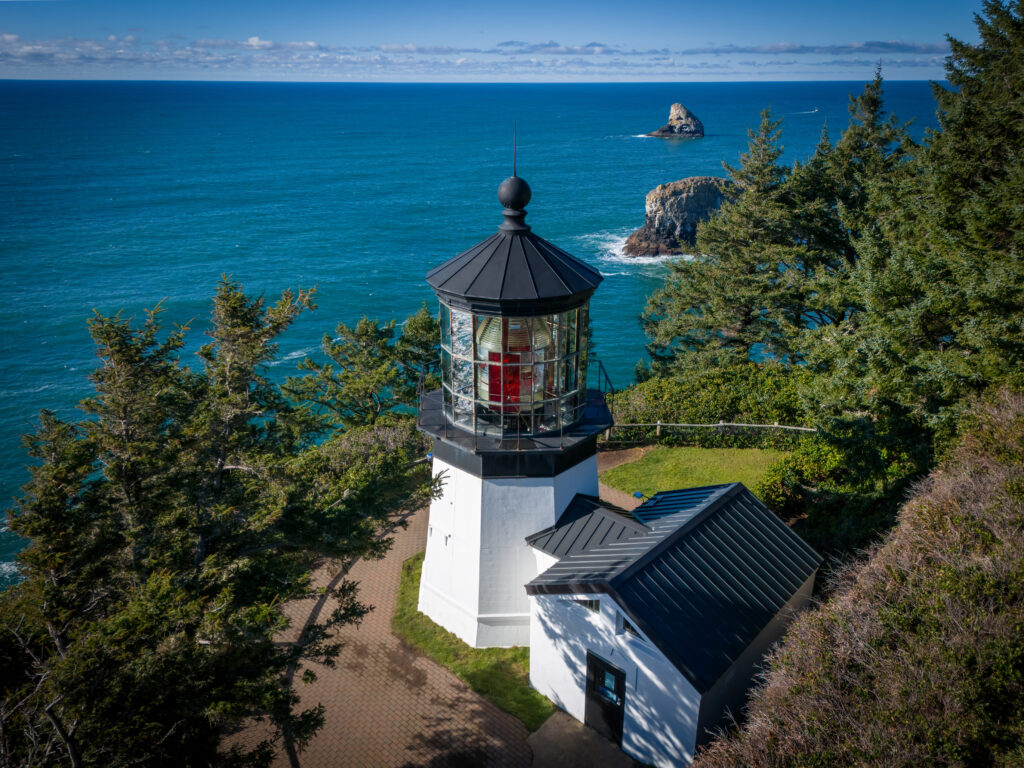
Days 3-5: Newport to Coos Bay (97.9 mi)
Consider extending your stay in Newport to spend an afternoon at the Oregon Coast Aquarium and take in the lighthouse and abundant natural beauty found in Yaquina Head Outstanding Natural Area.
Where to stay: Sun Outdoors RV Park in Coos Bay, OR
Sites and Stops Along the Way:
Newport – Marine life and science at the Oregon Coast Aquarium
Yaquina Head Outstanding Natural Area – Marine gardens and Oregon’s tallest lighthouse
Cape Perpetua Scenic Area – 800 feet high and trails lead through old-growth forest
Heceta Head Lighthouse – Oregon’s brightest beacon
Sea Lion Caves – Ride the elevator down 208 ft to an observation area in a large natural cavern to see Steller sea lions and more wildlife
Florence – Fishing boats and historic buildings filled with shops
Oregon Dunes National Recreation Area – Dune buggy tours, sandboarding, ATVing
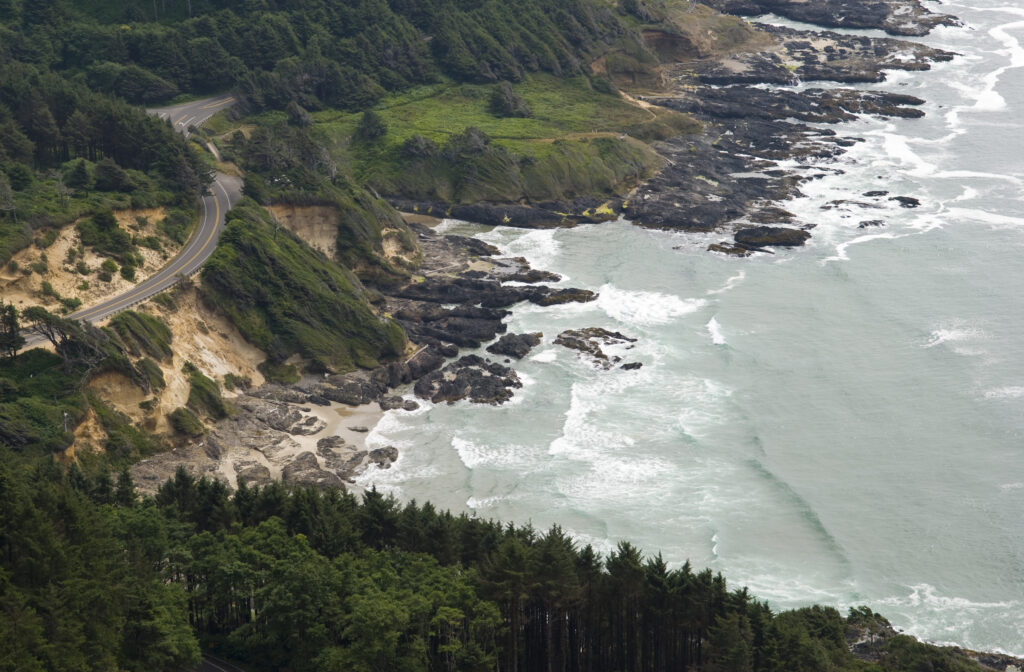
Days 5, 6, 7 (and beyond!): Coos Bay to Brookings (107 mi)
Where to stay:
Rogue Pacific RV Park and Cottages in Gold Beach, OR (details below)
Driftwood RV Park in Harbor/Brookings, OR (details below)
Sites and Stops Along the Way:
Coos Bay – Recreational fishing, crabbing, clamming
Bandon – World class golf, art, and sandy beaches
Port Orford – Scenic fishing harbor and the start of the Wild Rivers Coast Scenic Bikeway
Gold Beach (stay a while!) – Where the Rogue River, a Wild and Scenic River known for its rafting and fishing, meets the Pacific
Samuel H. Boardman State Scenic Corridor – Overlooks, hiking trails, beach access
Harbor and Brookings (stay a while!) – Known for its temperate “banana belt” climate and largest stand of coastal redwoods in the state. These seaside towns are sure to charm!
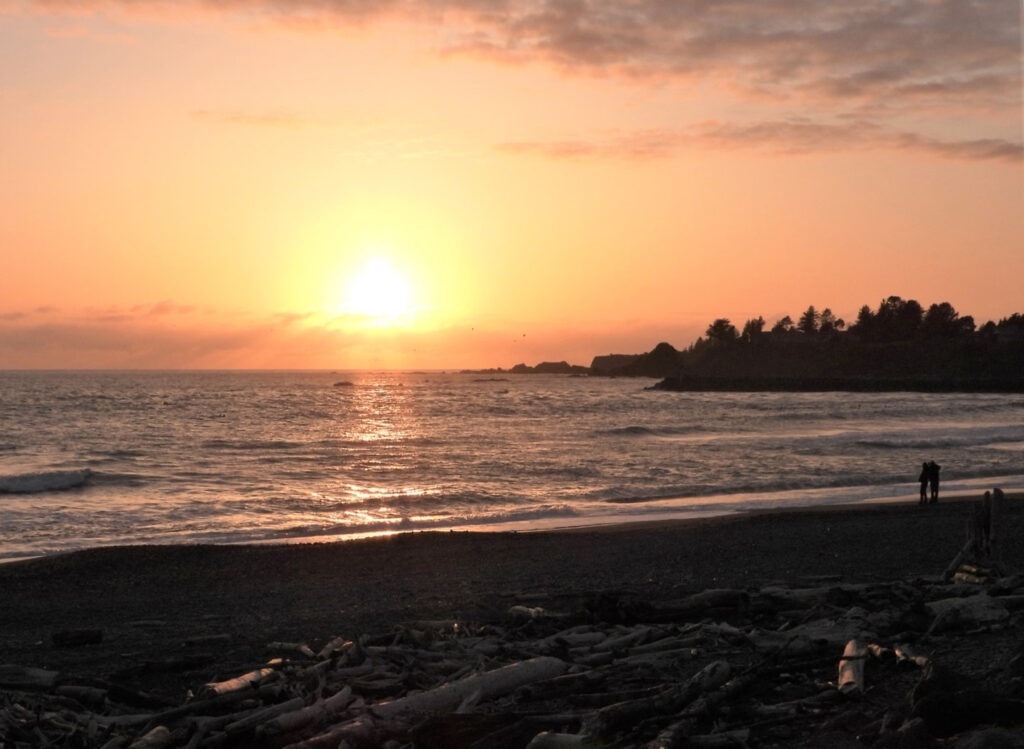
Where to Stay (for more than a day or two) on Oregon’s Southwest Coast
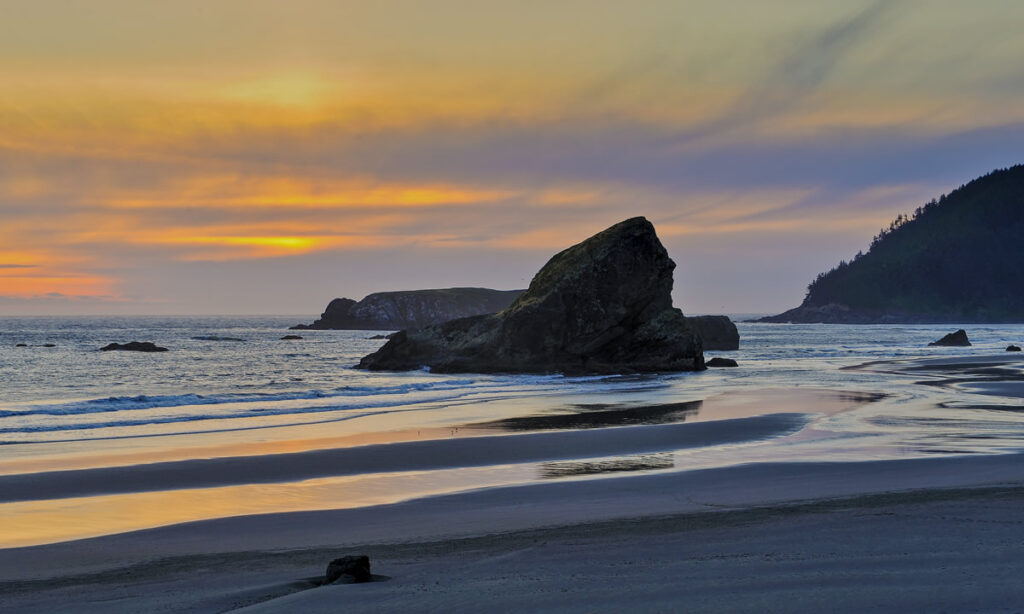
Rogue Pacific RV Park and Cottages in Gold Beach, OR
What this RV Park Offers:
Make an RV Site Reservation at Rogue Pacific RV Park
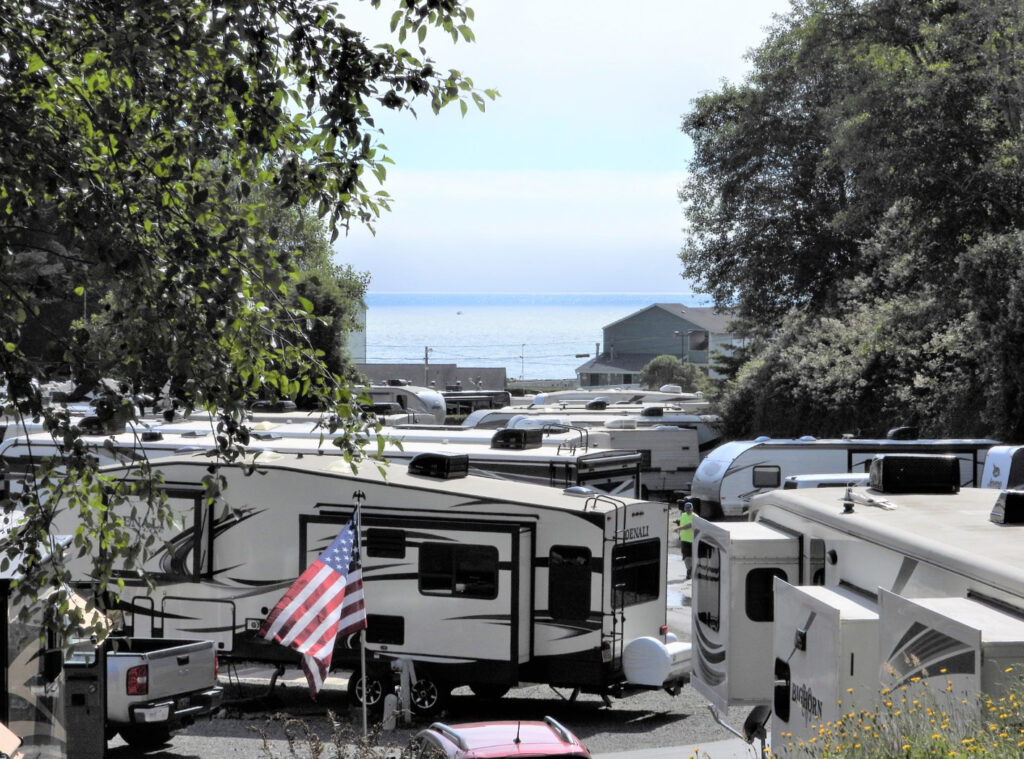
Driftwood RV Park in Harbor/Brookings, OR
What this RV Park Offers:
Make an RV Site Reservation at Driftwood RV Park
Bonus for RV Lifers
For those of you looking to settle into a new place for the long haul, spending a month or more in a handful of these coastal towns to “test” them out affords you a good sense of what it would be like to live there. By spending more than a few nights in an RV park, you’ll get to know local places, people, climate, and more to see if it’s a good fit for you.
Happy travels!
Looking to retire in an RV Park? Check out this article: “5 Reasons to Retire to a Long-term RV Park”


